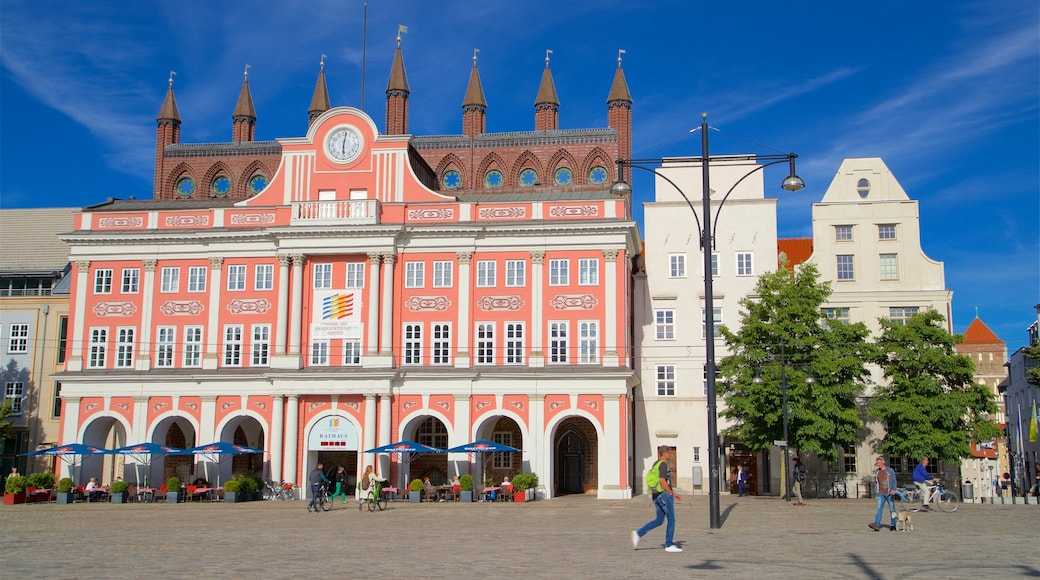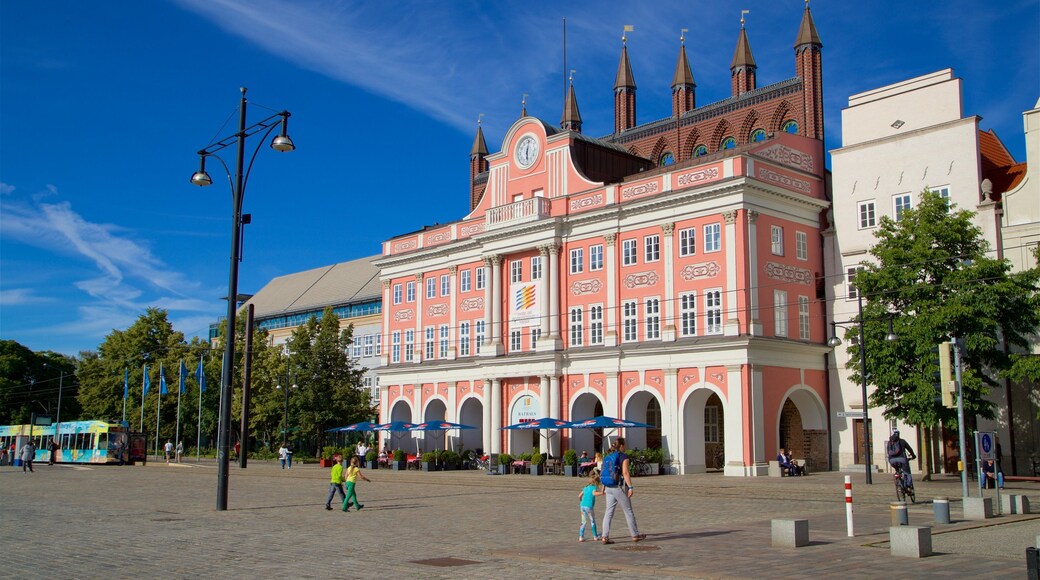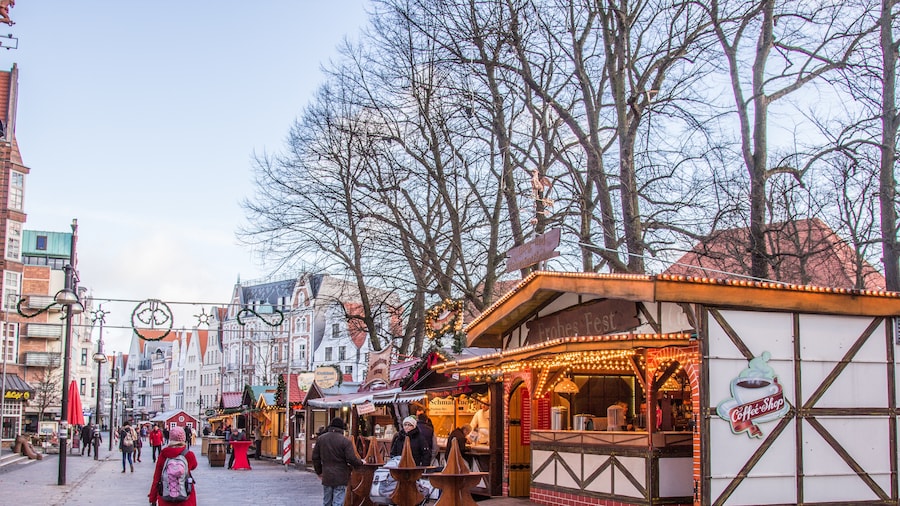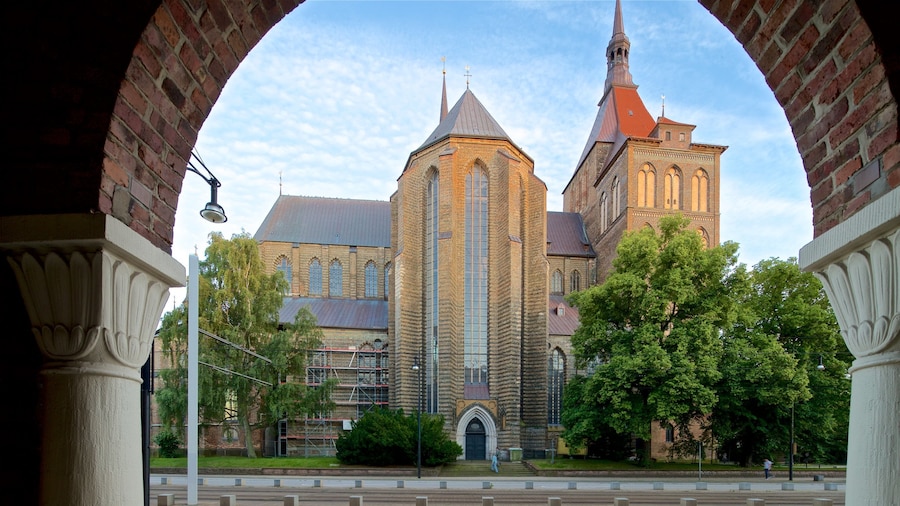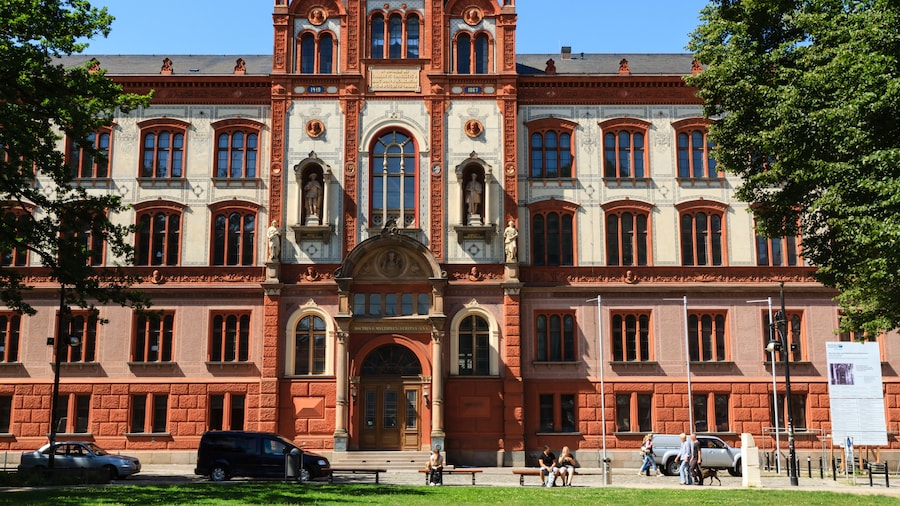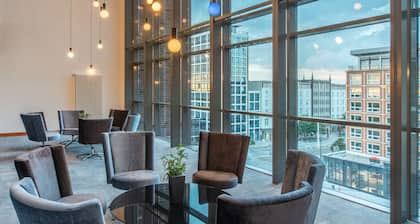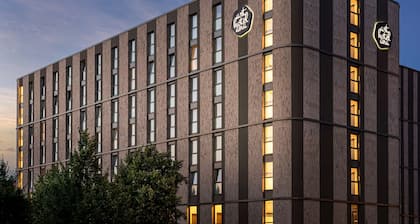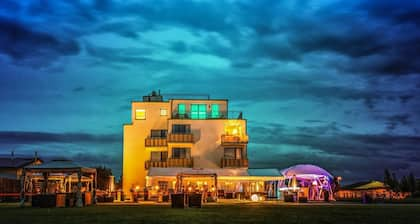One of Rostock’s most famous buildings, the Town Hall may be the oldest brick Gothic town hall in Germany. In the 13th century, it was simply three gabled houses, but was expanded and enhanced over time, culminating in the addition of its unique pastel pink façade and the gallery the runs the length of the building. Rostockers once came here to trade. Unfortunate students out late at night without a lantern were imprisoned. Join students, locals and tourists mingling here more casually now, all in appreciation of the Town Hall’s architecture and history.
You can’t miss the Town Hall as you approach the New Market, as its Baroque pink façade stands out against the buildings around it. Look up at the seven distinctive brick towers that adorn the roof. They may symbolize the seven Baltic countries of which Germany forms a part or the Father, Son, Holy Spirit and the four elements. Spot the Gothic porch, from which the council’s decrees, the “Burspraken,” were read out to assembled townspeople.
Walk up the stairs and stop at the northernmost pillar. Find Johannes, a bronze snake that is alternatively said to be a symbol of wisdom for the councilmen, a tape measure for eels for the women who sold fish in the marketplace or a way craftsmen historically proved that they had actually been to Rostock. Rub its head for good luck and enter the interior hall, whose beamed ceilings and Hanseatic murals give the space a quintessentially Germanic feeling. End your day with dinner in the cellars, where a restaurant provides medieval food and entertainment.
The Town Hall is located on the eastern side of the New Market, close to a variety of tram lines. Walk here in 20 minutes from the central train station or drive in 5 minutes. Parking is available on nearby streets, though the New Market itself is closed to vehicles. The Town Hall is open to visitors during business hours. The restaurant in the cellar is open daily for dinner until late at night and for lunch every day but Monday.

